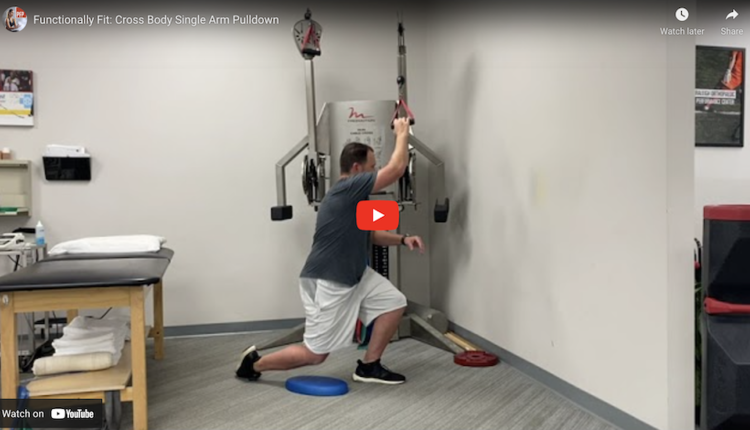Limited thoracic spine rotation may negatively impact performance in sport or cause undue stress on the lower back and/or shoulders. Sports such as golf, volleyball, swimming, tennis and those that involve throwing rely upon effective kinetic chain linking and appropriate mobility to ensure proper movement patterns. This exercise offers a way to address any restrictions in t-spine mobility.


Execution:
Begin in half-kneeling with the left knee down on a foam pad about 6-8 inches away from a wall and the right leg up. Next, position a foam roller between the right lower inner thigh and the wall, and place the left hand/forearm against the wall with the arm perpendicular to the torso. Maintain pressure against the wall with the forearm while pushing the right leg into the foam roller as you slowly rotate the torso to the right leading with the right arm.
The head should follow the arm as it moves to the right. Move through the full available range of motion and pause at end range. Do not force the motion or move through any pain. Slowly return to the start position. Perform 5-10 reps each side, and be sure to keep the front leg still throughout. Emphasis should be placed on smooth quality movement at all times.
Application:
This exercise will facilitate thoracic spine mobility. It is ideal for those with any marked asymmetry or athletes participating in sports that require rotational activities. Limited thoracic spine mobility can lead to excessive strain on the rotator cuff/labrum as well as potentially harmful forces on the lumbar spine with repetitive activity. In addition, limited rotation may reduce force generation and power output, thereby decreasing performance.
Consider using this drill as part of a warm-up routine or as a corrective exercise. I like using it with pitchers as it can help promote optimal rotation and optimize throwing mechanics especially if they have limited mobility. While preventing overuse injuries, this exercise can also help athletes improve kinetic chain efficiency thereby producing more velocity and power with less stress on the entire system.



















